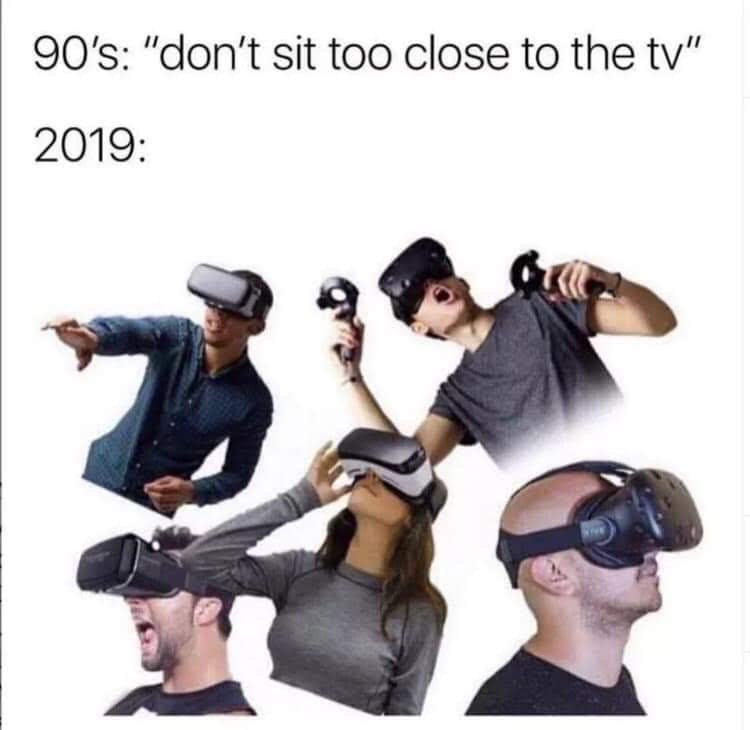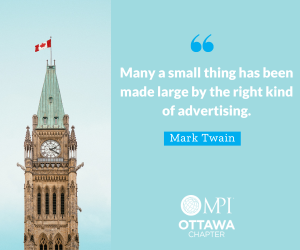Studying for the Certified Meeting Professional exam? MPI Ottawa has you covered!
Learn More
Check out all the exciting events taking place in the upcoming 2023/2024 year!
Learn More

Two Uses for Virtual Reality in the Meetings Industry

Virtual Reality (VR) is an advancing technology that has the potential to change the meeting industry in two innovative ways: delivering a WOW factor at events, particularly to highlight sponsor or exhibitor messages; and allowing planners to visualize meeting spaces in advance.
Imagine a tradeshow booth where an exhibitor offers you a headset to put on which will transport you to a computer-generated simulation of a three-dimensional world. Audiovisual companies can design a fully immersive experience that can link to anything; for example, you can take a trip to Mexico or explore the outer reaches of the solar system without even leaving the room.
VR creates immersive surroundings in which to interact in a realistic way. It ignites more than just the traditional senses of a meeting environment. It is a kinesthetic experience in which you can engage and create lasting memories. Move your head to the right and the vision changes. Hold onto controllers, and your hand movements can move the objects in view.
One hurdle to overcome is getting participants to engage in a VR activation. Some people think they will look silly with the headset on and this impacts the number of people willing to try it. And some of those who do take the chance, don’t want to keep the headset on for very long.
The reason to persuade clients to try VR is that the wearers become fully attentive, since they cannot focus elsewhere once they have the headset on. This can create a great sponsorship activation. The virtual environment is a 360-degree space—everything the participant sees is controlled by the content creators. There is no other simulated experience in the world that can accomplish such a distraction-free encounter.

Because VR is a personal experience as opposed to a shared one, this technology is most beneficial in an educational or relaxed environment—somewhere that people don't feel like they are being watched and where everyone else is doing the same thing. It’s best to create a pop-up “event within an event” space where your participants are separated from the crowds, enabling them to get away virtually. Using analytics, we can review the participants’ VR experience to see what was most captivating, to assess if the activations were successful, and if there was interest in the right places at the right times.
Back in 2016 when VR first trended, it was much easier to get participation and meaningful engagement. These days, we can combat the low participation rate with gamification, having a group of people congregate to engage in a fun and competitive environment.
A second ideal application for VR is to design a virtual tour of venues or event spaces, and pre-visualization of a planner’s dream event. By consulting with audiovisual companies, destinations can offer private tours through event spaces—a great solution when someone cannot travel there in person. These are essentially 360-degree photo tours with voice-over, which can also be transitioned into a 360-degree high resolution video tour with a personal tour guide.
The best advice is to stop thinking about this technology from an individual perspective, or as a trendy must-have, and look at it as another potential gadget in your tool belt. Design the experience around the key messaging for your event or venue, and maybe VR can be the perfect event technology solution.
 Article written by Disa-marie Cameron, FMAV
Article written by Disa-marie Cameron, FMAV
Recent Example:
Nancy Bradshaw, Business Development Manager at Tourism Saskatoon says her destination started using VR technology about four years ago, to show people what this city has to offer. Her organization now has three virtual videos, each less than two minutes long, that feature various aspects of Saskatoon. Planners can don a headset and feel like they are: 1) paddling down the South Saskatchewan River through a rural setting as they approach the urban skyline; 2) outdoor skating in gliding circles around Meewasin Park; or 3) surrounded by swirling Indigenous dancers with traditional drummers pounding out the beat at Wanuskewin Heritage Park. Bradshaw says the feedback is always positive after viewers have been immersed in one of the videos, plus people remember the highlights better.
Article edited by Melanie Hudson, National Association of Federal Retirees


Leave a commentOrder by
Newest on top Oldest on top